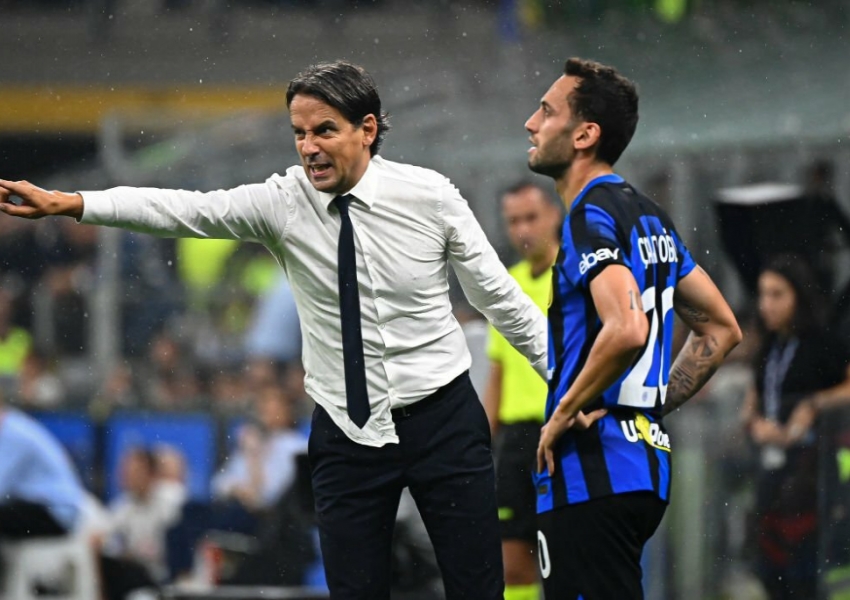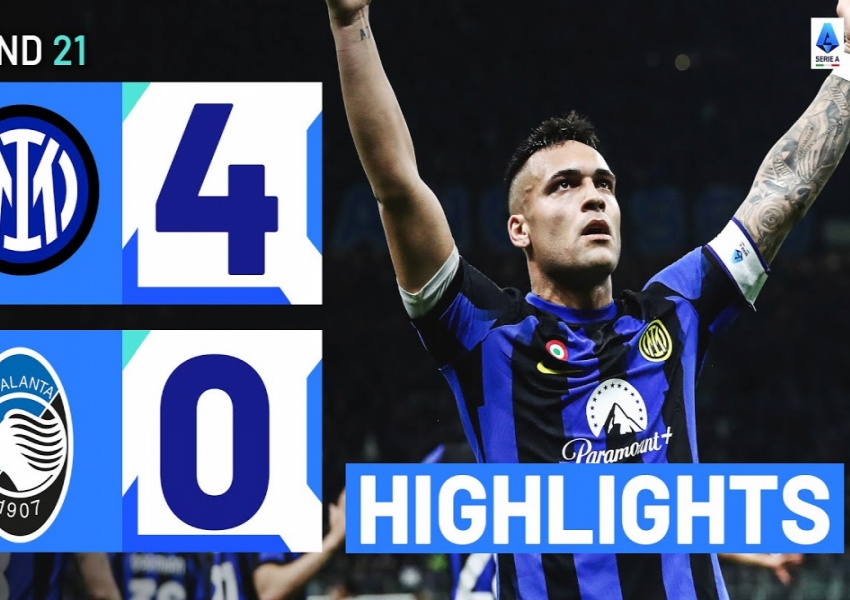Inter Milan Overcomes Midfield Dependence: A Two-Year Transformation with Confidence from Last Season’s 5 Wins in 6 Games
Inter Milan has undergone a remarkable transformation over the past two years, moving beyond its dependence on a singular midfield star. Hakan Çalhanoğlu’s recent injury has raised concerns, with many fans worrying about how the team will cope without its Turkish playmaker. As medical assessments suggest, Çalhanoğlu is likely to miss at least three games, including the much-anticipated "Derby d’Italia" against Juventus, with a potential return scheduled for the match against Venezia on November 3rd. Inter fans are understandably anxious, with some even admitting to sleepless nights over the news.

However, Italian football pundit Altuobecchi has offered a different perspective. He believes that while Çalhanoğlu’s absence will reduce the aesthetic quality of Inter’s play, the team has evolved significantly from the past, having developed ways to manage without a deep-lying playmaker. The question remains—does this prediction hold water? To answer that, we need to examine the changes that have taken place since Çalhanoğlu joined Inter and how the team has fared without him.

From Brozović Dependency to Çalhanoğlu’s Emergence
When Çalhanoğlu initially joined Inter, he primarily played as an advanced central midfielder, and the team was heavily reliant on Marcelo Brozović. Without the Croatian on the pitch, Inter struggled to control games, often finding it difficult to secure wins. The turning point came in October 2022, just before the Qatar World Cup, when Brozović’s availability was limited due to injuries and off-field issues. Simone Inzaghi experimented with different solutions, and it was during a match against Salernitana that Çalhanoğlu was deployed in a deeper midfield role for the first time.

This tactical shift worked wonders, as Inter went on a four-match winning streak, with Çalhanoğlu playing as a deep-lying playmaker. From that moment, the Turkish midfielder became the preferred option in that position, relegating Brozović to a secondary role. Even after Brozović returned from injury post-World Cup, he never reclaimed his starting spot from Çalhanoğlu. This shift in dynamics ultimately led to Brozović’s departure from Inter.
With Çalhanoğlu now the focal point in midfield, a new problem arose: "Çalhanoğlu dependency." The 2022-23 season saw Inter rely heavily on him to orchestrate their play. In the latter half of the season, Çalhanoğlu missed four matches due to injury and Champions League rotations. During this period, Inter lost two games—against Fiorentina (0-1) and Napoli (1-3)—while managing a draw against Salernitana (1-1) and a win over Sassuolo (4-2).
Inter Breaks Free from Çalhanoğlu Dependency
Despite these struggles, something changed for Inter last season. Out of the 38 matches in Serie A, Çalhanoğlu featured in 32, but in the six matches he missed, Inter won five. These victories came against Atalanta (4-0), Fiorentina (1-0), Lecce (4-0), Genoa (2-1), and Frosinone (5-0), with the only loss being a 0-1 defeat to Sassuolo in a match where Inter had already secured the league title and complacency set in.
Looking at the numbers from last season, during the 2,556 minutes that Çalhanoğlu was on the pitch, Inter scored 56 goals and conceded 19, averaging a goal every 45.6 minutes and conceding every 134.5 minutes. However, in the 864 minutes that he missed, Inter netted 33 goals while only conceding 3, improving their averages to a goal every 26.2 minutes and conceding once every 288 minutes.
This stark contrast in the team’s performance, with and without Çalhanoğlu, does not suggest that Inter is necessarily stronger without him. However, it does prove that the Nerazzurri have developed ways to cope without their deep-lying playmaker. In those six games where Çalhanoğlu was absent last season, substitutes like Kristjan Asllani, Nicolò Barella, and Henrikh Mkhitaryan filled in admirably.
The Key to Success: Tactical Adjustments and Increased Running
Altuobecchi points out that Inter’s ability to overcome Çalhanoğlu dependency stems from two key factors. First, in his absence, Inzaghi has altered the team’s approach by requiring other midfielders, and even forwards, to drop deeper to receive the ball and contribute more defensively. This shift has helped maintain a better balance between attack and defense.
Second, without Çalhanoğlu dictating play, Inzaghi tends to make substitutions earlier, introducing fresh legs and energy into the midfield. This has led to higher running statistics in those matches, and as many football observers know, when Inter’s running metrics are high, they are much more likely to secure positive results.
Looking at this season so far, Çalhanoğlu has played 618 minutes, during which Inter has averaged 2.32 goals per 90 minutes and conceded 0.87 goals per 90 minutes. These figures are slightly better than the team’s overall averages of 2.10 goals scored and 0.90 goals conceded. However, the impact of his absence does not seem as significant when compared to the contributions of other key players.
Bastoni and Barella: Inter’s New Standard Bearers
For Inter, two Italian players—Alessandro Bastoni and Nicolò Barella—have a much more pronounced influence on the team’s performance this season. Bastoni’s numbers are particularly impressive, as Inter averages 2.41 goals per 90 minutes and concedes only 0.63 goals per 90 minutes when he’s on the pitch. Similarly, Barella’s impact is clear: when he plays, Inter concedes just 0.55 goals per 90 minutes.
These statistics highlight a growing trend: while Çalhanoğlu remains an important player for Inter, the team has diversified its strengths, with players like Bastoni and Barella becoming increasingly crucial. Bastoni’s ability to progress the ball from defense into attack, along with Barella’s relentless work rate and defensive contributions, has given Inter more stability and balance.
Confidence in a Crowded Schedule
As Inter faces a grueling fixture list, with core players inevitably picking up injuries along the way, the team can take solace in their newfound resilience. The squad is no longer reliant on a single midfielder to control games. The evolution of Inzaghi’s tactics, combined with the emergence of new leaders like Bastoni and Barella, means that Inter has the tools to navigate this challenging period.
The road ahead may be tough, and the absence of Çalhanoğlu for key matches will undoubtedly be felt. However, last season’s results without him—5 wins in 6 matches—offer reason for optimism. As long as Inter maintains its running intensity and tactical discipline, the team is well-positioned to remain competitive, even during the most demanding stretches of the season.
Injuries to key players are inevitable, especially in a season as tightly packed as this one. But with confidence drawn from last year’s successes and the continued development of Bastoni and Barella, Inter can approach the challenges ahead without panic or uncertainty. The lessons of the past two years have shown that this team is capable of thriving, even when its midfield stars are unavailable.
Copyright Statement:
Author: mrfootballer
Source: Mrfootballer
The copyright of this article belongs to the author. Reproduction is not allowed without permission.
Recommended Blog
- Inter Milan’s Narrow Win Sets Four Records as Defensive and Offensive Stars Emerge
- What Does the FA See in Tuchel? Why His Champions League Success Might Not Translate to England
- Inter Milan's Youth Movement: How Oaktree Capital's Strategy Could Signal the End for Eight Veteran Players
- Oaktree Capital's Youth Strategy at Inter Milan: Eight Veteran Players Facing an Uncertain Future
- First Victory Achieved! Offensive Improvement, Set-Pieces as a Weapon, Ivanković's Bold Moves Pay Off
- Is One of Serie A’s Best U23 Midfielders Still Salvageable at Inter? Key Changes and Growing Pains
- Nations League A Round 4: Belgium Finds New Momentum, Dutch Captain's Suspension Sparks Crisis
- Dutch and Italian Stars Shine for National Teams, But Struggle for Starting Spots at Inter
- UEFA Nations League B: England Needs a Striker, Greece Finds Success in the Unexpected
- UEFA Nations League A, Group D: Can Denmark’s Defensive Streak Continue? Spain’s Lineup Holds Uncertainty
Hot Blog
- Man City’s 21-Year-Old Star Returns Home as a Hero! Receives $350,000 Mercedes, Gifts It to His Father
- AFC Champions League Quarterfinal Draw: Yokohama Faces CR7! Two High-Stakes Clashes as Japan’s Duo Battle in the Bottom Half
- 175 Days on the Sidelines! Barça’s 32-Year-Old Guardian Dreams of a Champions League Comeback
- English Media: Manchester United Will Win Premier League Title in 2028! History Will Repeat Itself, Two Teams Serve as Inspirations
- 4 AM Showdown: Barcelona's Revenge Match! Win = 3-Point Lead Over Real Madrid, Key Players Rested
- 0-2 Double Defeat! China National Team Stuck at 6 Points: No More Direct World Cup Hopes, Two Crucial Matches Ahead
- China National Football Team Drops 13.6 Points, Slips to 94th in FIFA Rankings: Syria Overtakes, New 9-Year Low
- 0-0 Draw! Japan 12 Shots, 2 Missed One-on-Ones: 8 Matches, 20 Points, Group Winner, Saudi Arabia Stuck at 10 Points in 3rd
- 4-1, Double Win Over Brazil! Argentina Celebrates: World Cup Qualification Secured, 4th Team Globally to Qualify
- Real Madrid Got Lazy: 7 Kilometers Less Running in UCL! Two Superstar Spectators While Barça Outruns Them All